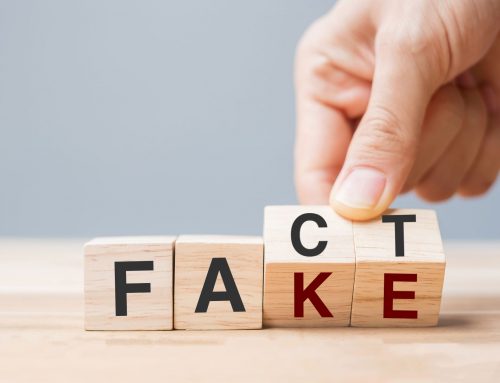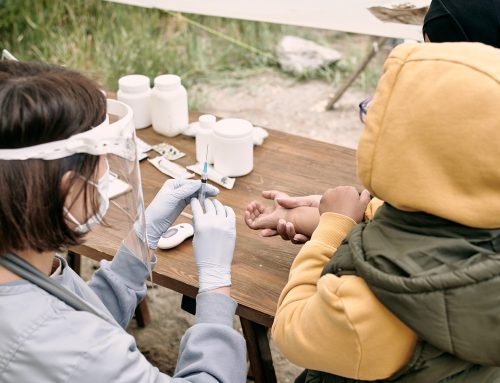Newly introduced EU level regulation will obligate EU member states to implement a separate collection of textile waste by 2025. Considering this change, we interview Maija Makkonen, the communication specialist at UFF, to learn more about the future of textile reuse under the influence of new regulation.

To tell you more about our guest, UFF is a non-profit organization and largest collector of second-hand textile in Finland. Hanken School of Economics and UFF has been partnering for almost a year by now, including different engagements such as research, student projects, multiple guest lectures at Hanken, and on-site visits to the UFF textile sorting facilities organized for Hanken students. Both parties see such partnership important for rising awareness of textile reuse among students and are working jointly on forward-looking projects related to circular economy.
Anna: Maija, could you tell us why reuse of clothing is so important and what UFF’s role in reuse?
Maija: If we look at the waste hierarchy in accordance with Finnish waste legislation, reuse is the primary goal for collected used clothing. And at UFF, we understand reuse as a way of giving the textiles a second life. They can be sold retail to the Finnish consumer in our shops or to wholesale customers that have their own retails shops in Europe and Africa.
Clothes reuse is important on many levels; on economic, social and ecological level the impacts of clothes reuse is significant. On the economic level, the second-hand clothes have created a sustainable clothing market that employs people in various fields. For example, UFF has about 350 employees now in Finland.
On the social level, the reuse of clothes benefits consumers that want a more affordable and environmentally friendly way to buy clothing. Charitable organizations like UFF also support global development projects with the sales proceeds from the donations. And of course, the ecological benefits are great; the reuse of clothes reduces the usage of land, energy, water and pesticides and diminishes greenhouse gases (CO2). UFF organizes the clothes collection service that covers all of Finland with the sale proceeds from the collected clothes so that the consumers have the opportunity to donate clothes to reuse.
I must say Finnish people are avid clothes donors; in the year 2019, they donated over 15 millions of kilograms of textile products to UFF. The reuse rate of the clothes donated to UFF is considerably high, nearly 95%. Of course, we get clothes that are not suitable for reuse; from the annual clothing collection, about 5% cannot be reused as such or as material due to their condition and is being directed to energy production.
Anna: In Finland, we hear news about new EU level regulation which most likely will change or impact in some way the textile collection in the country. Could you tell more about the new regulation?
Maija: A new EU level legislation places heavy emphasis on circular economy, and the European Commision has identified textiles as one of the priority categories of circular economy. In practice, new policies will oblige the EU member states to organize a separate collection for waste textile products by the year 2025. The separate collection targets textiles that are reusable as material but not as garments anymore. In addition, the new legislation requires from the EU member states that these separately collected textiles will not be incinerated (burned for energy) or landfilled. Finland has a goal to oblige mentioned policies ahead of the official schedule – in the year 2023, instead of the required 2025.
Anna: How consumers can identify the quality of textile products, whether they are suitable for reuse or not, and sort them accordingly?
Maija: Once again, it is a consumer who will have to make the initial determination whether a garment is suitable for reuse as clothing, as material, or not reusable at all. Therefore, it is highly important to raise public awareness of the sorting criteria for reuse of clothes as such for the original purpose, reuse as material, or waste materials which also in the future are to be placed to the mixed waste collection. The goal of course is to prevent recourses from being wasted.
The consumer’s assessment of the condition of the clothes should be guided by a national standard. Guidance from the authorities will help to maximise the reuse rate of clothes and minimize textile waste. Now, the rule of thumb is that the clothes you could give to a friend are the clothes you can donate for reuse through non-profit organizations. That will also be true in the future. However, soon consumers will also have to assess the condition and quality of fabric for their reusability as material. And as this can be challenging even to the textile industry professionals, the consumers will need a clear and consistent guideline to follow.
We see this as an area where a strong focus is necessary for all actors in the textile circular economy – waste management companies, non-profit and private collectors, research groups, and other actors. For the same reason, we are always glad to meet Hanken students and discuss more textile reuse or work with them together on projects related to sustainability and supply chain for used textiles.
Listen to the full discussion with UFF available through Hanken Sustainability Unwrapped podcast episode “Future of textile reuse in Finland and beyond” published on 9th of November 2020.
Anna Zhuravleva, Researcher at Hanken School of Economics, HUMLOG Institute
Maija Makkonen, Communication Specialist at UFF
Photo: Unsplash




